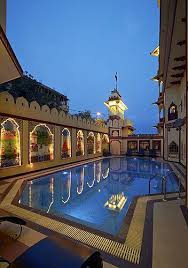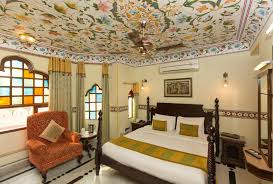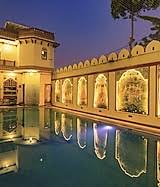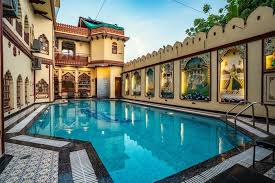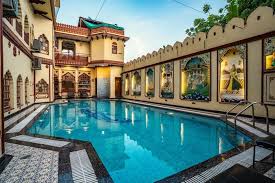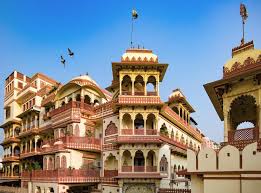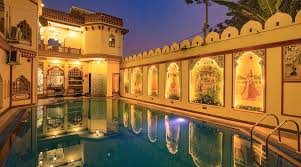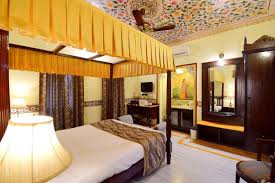umaid bhawan Verified Trusted
Umaid Bhawan Palace in Jodhpur, Rajasthan, is one of the world’s largest private residences. Built between 1928 and 1943, this architectural marvel combines Indo-Deco, Classical Revival, and Indian styles. Part royal residence, part luxury hotel, and part museum, it offers a glimpse into regal Rajasthani grandeur.
D1-2A, Via Bank Road, behind Collectorate, Meera Marg, Bani Park, Jaipur, Rajasthan 302016
About umaid bhawan
Umaid Bhawan Palace: A Majestic Symbol of Royal Legacy in Jodhpur
Perched on Chittar Hill, the highest point in Jodhpur, the magnificent Umaid Bhawan Palace stands as a beacon of luxury, heritage, and architectural brilliance. One of the last great palaces built in India before independence, Umaid Bhawan is not just a monument to royal splendor—it is a living testament to resilience, grandeur, and visionary architecture.
Historical Significance
The story of Umaid Bhawan Palace begins in the 1920s when a severe famine struck the region of Marwar (present-day Jodhpur). Maharaja Umaid Singh, the 37th Rathore ruler, commissioned the construction of the palace primarily to provide employment to thousands of people affected by drought. It was a bold and benevolent act that aimed to transform crisis into opportunity.
Construction began in 1928 and spanned over 15 years, finally reaching completion in 1943. The project employed over 3,000 workers and gave birth to one of the largest private residences in the world. The palace was named after Maharaja Umaid Singh, and it was designed by renowned British architect Henry Vaughan Lanchester, who merged elements of Indian and Western architectural styles into a cohesive and majestic design.
Architectural Grandeur
Umaid Bhawan Palace is a stunning blend of Indo-Deco (Art Deco with Indian elements), Classical Revival, and traditional Rajput architecture. The golden-yellow sandstone façade glows under the sun, while the interiors are adorned with lavish use of Makrana marble, Burmese teak, and exotic furniture from around the world.
The palace covers 26 acres of land, including 15 acres of lush gardens. It boasts 347 rooms, making it one of the largest private residences globally. One of its most iconic features is the massive central dome, which rises to a height of 105 feet and is flanked by four angular turrets. The dome’s symmetry and scale echo the grandeur of European palaces while remaining rooted in Indian aesthetic sensibilities.
The interiors are equally opulent. The grand banquet hall can seat up to 300 guests, and the palace also houses a private museum, trophy rooms, royal suites, marble squash courts, and an indoor swimming pool. Murals by the Polish artist Stefan Norblin, who worked extensively on the interiors, blend Art Deco with traditional Indian motifs in a way that is both elegant and unique.
Royal Residence, Museum, and Luxury Hotel
Today, the Umaid Bhawan Palace serves three distinct purposes:
-
Royal Residence: A part of the palace is still home to the royal family of Jodhpur, led by Maharaja Gaj Singh II, the grandson of Umaid Singh.
-
Museum: Open to the public, the museum showcases a fascinating collection of artifacts from the royal era, including vintage clocks, crockery, weapons, and an impressive collection of classic cars displayed on the palace grounds.
-
Luxury Hotel: Managed by the Taj Hotels group, a portion of the palace operates as a luxury heritage hotel. With regal suites, five-star service, and breathtaking views of the city and gardens, it has frequently been ranked among the best hotels in the world. The Taj Umaid Bhawan Palace offers guests an immersive royal experience with fine dining, Jiva spa services, and curated cultural experiences.
Cultural and Touristic Importance
Over the years, Umaid Bhawan has become a symbol of Jodhpur’s regal heritage. It has hosted numerous celebrities, dignitaries, and lavish weddings—including the high-profile wedding of Bollywood actor Priyanka Chopra and American singer Nick Jonas in 2018, which brought global attention to the palace.
The palace stands as a cultural bridge between the past and present, offering insights into the lifestyle of Indian royalty while functioning as a modern-day luxury destination. Its gardens, architecture, and hospitality draw tourists, history buffs, and architecture enthusiasts from across the globe.
Conclusion
Umaid Bhawan Palace is more than just a royal residence; it is a living piece of history that continues to inspire awe. From its charitable origins to its architectural splendor and its current role as a luxury icon, the palace represents the enduring spirit of Rajasthan. Whether you're exploring its museum, staying in its opulent suites, or simply admiring it from afar, Umaid Bhawan leaves an indelible impression—a true jewel in the crown of Jodhpur.

